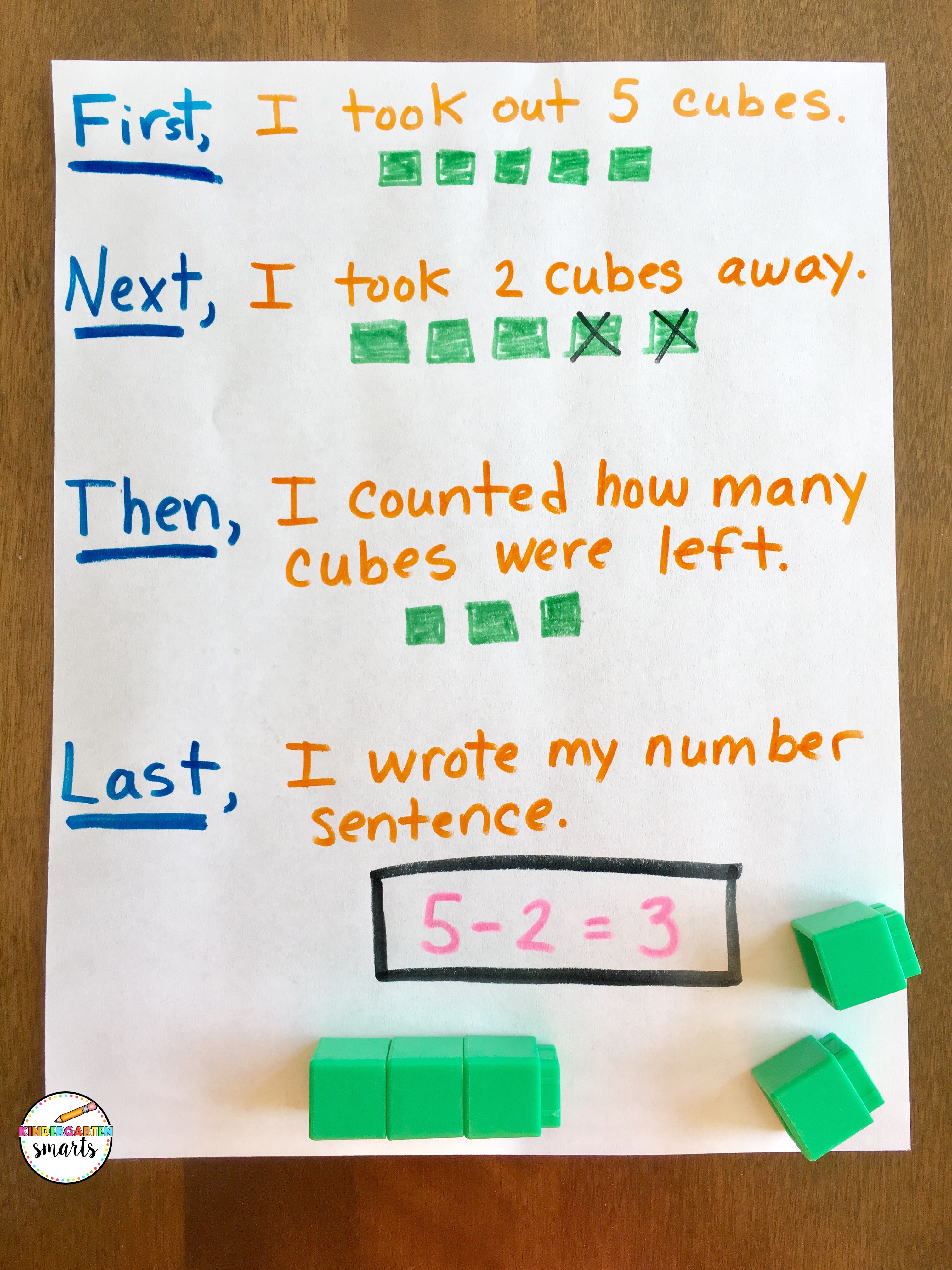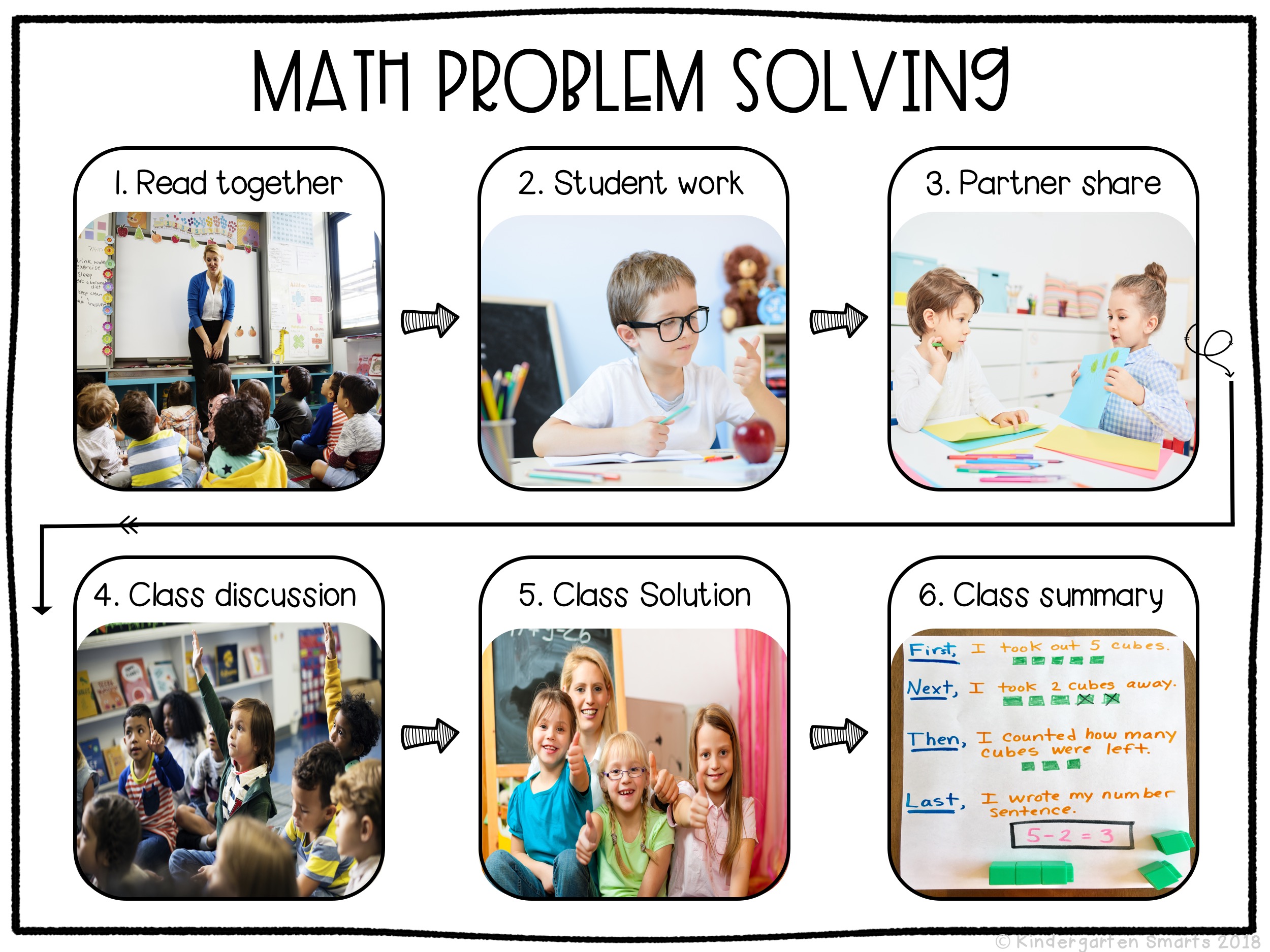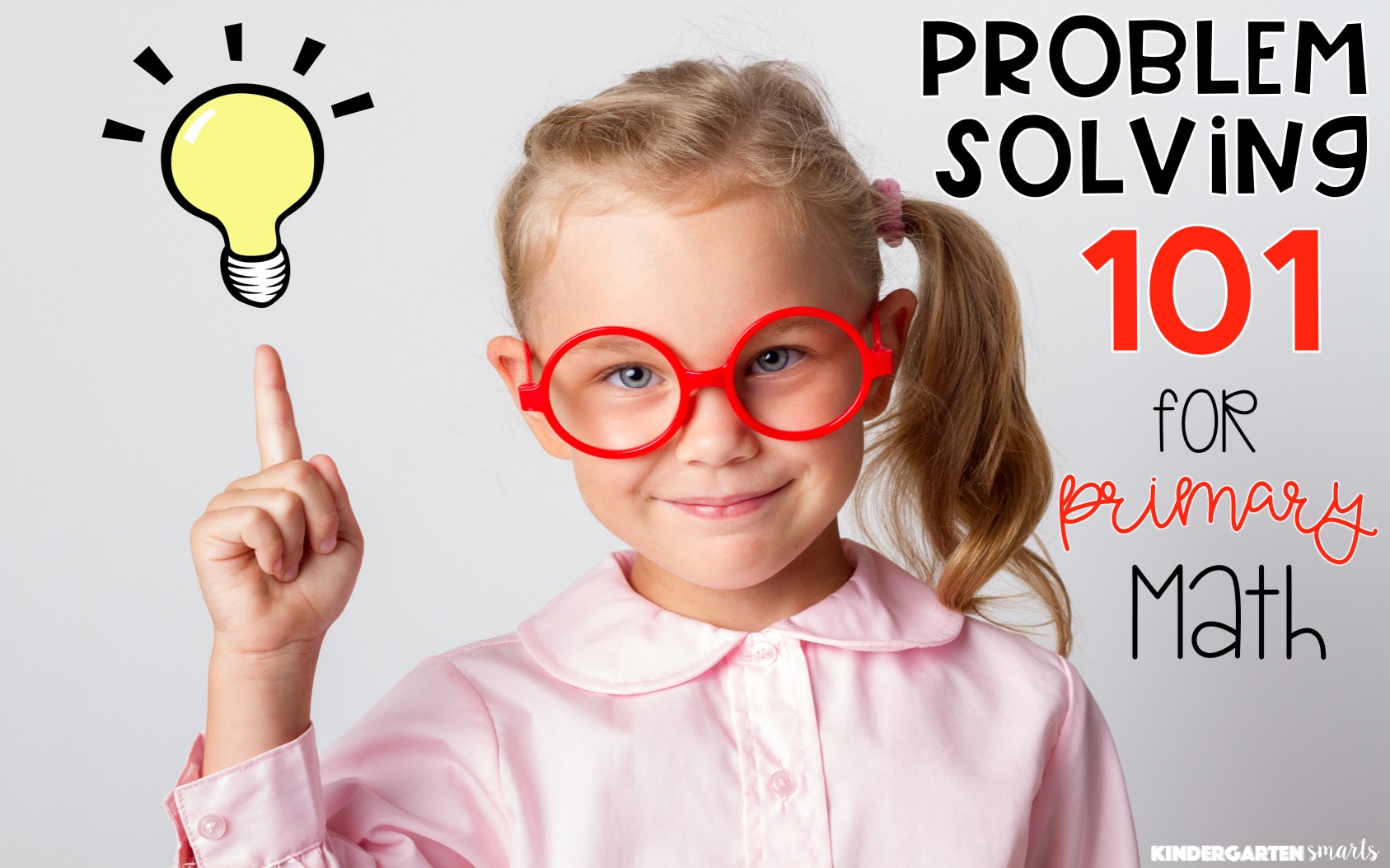Teaching your primary students problem solving in mathematics can be maddening at times, but it’s a lifelong skill that is so important. In this case, I will be talking about how to implement problem solving in your classroom specifically in math. There are so many strategies on how to solve a math problem, and it’s important for students to think about how they want to tackle it, and the steps they used to get there. It’s also great for students to hear how others came up with their solution too.
A few years ago, I was actually filmed teaching these problem-solving steps as a model for the school district I was teaching in. Kindergarten problem solving takes a lot of practice, but once you and your class get the steps down, it’s like clockwork, and it’s really beneficial!
Here 6 steps to follow when conducting math problem solving:
1. Read the problem together:
Each student gets their own sheet of paper with the word problem printed at the top. Have the students sit on the carpet, and read the problem several times. I point out the numbers and circle them. I don’t want to give away what method to do or if the question is asking for addition or subtraction. So I keep it pretty basic when I introduce the problem.

Here is a sample of a problem the students would do. This is the paper they would have in front of them with space to work under the problem.
2. Student Work:
Students work independently for about 3-5 minutes at their tables. At the tables, I provide buckets full of manipulatives. Inside are Unifix cubes, 10-frames, number lines, number bonds, and their pencils and crayons. Students are able to choose whatever method works for them. They are not to work with their partner at this time. They are to think for themselves on which strategy they would like to use. I also created an anchor chart that can be a good reminder for them.

I have this anchor chart posted in front of the room so the students can refer back to this when picking a strategy.
3. Partner share:
This part is tricky, but since we always practice this engagement strategy, it’s not that difficult for them to discuss with their partner how they solved the problem. I had to model it a few times pretending like I was a student. Basically, they are to show their partner how they solved it, and I give them the sentence starter, “I solved the problem by _____.” This should be roughly 1-2 minutes.

One student discusses the strategy they used. The other student listens. Switch.
4. Class discussion:
I have the students bring their paper and pencil, and I usually pick one manipulative to bring to the carpet. For example, I say bring 10 cubes with you. Then I call on about 6 students to give me their answer. That’s it. No explanation yet. I write down the correct answers and incorrect answers. Then I go back and call on the students so they can tell the class how they solved the problem. I usually illustrate or model what they are saying on my whiteboard or doc camera. For example: If the student says, “I drew a picture of 5 balloons.” I ask them, “why did you draw 5?” They can explain that it says 5 in the sentence. So then I go ahead and draw 5 balloons on the board. Then the student continues to explain, “then I crossed out 2 balloons.” I again ask why. I proceed to cross out 2 balloons. Then I ask what did you do after that? They say, “I got 3 balloons.” I ask the class if that makes sense. I love it when they go further and write it into a number sentence. 5-2=3. Then I move on to the next kid. I make sure to pick kids who solved the problem differently this way the class can see multiple ways to solve a problem. I make sure that the students who provided the incorrect answer explain their way. Then we realize that their way didn’t make sense and I cross out their answer (in a super positive, nice try, you were on the right track sort of way!).
5. Class Solution:
After we have gone through a few different strategies from step 4, we pick ONE way to solve it and have everyone try it together with their own manipulatives, paper, and pencil. Most of the time, I just pick it. I have everyone count out 5 cubes and then take 2 away. We then all write the number sentence on our paper.
6. Class Summary:
This is teacher-led and can be done on your whiteboard or on chart paper. I pretty much sequence our steps in order using First, Next, Last. For example: “First, we counted out 5 cubes because Jack had 5 balloons. Then, we took 2 away because he gave them to his friend. Last, we counted how many cubes we had left.” We know that Jack has 3 balloons left so we wrote the number sentence 5-2=3. Then after we come up those steps, we all read it together, and that’s problem-solving! This process should take about 30-40 minutes, but don’t be surprised if it takes you up to 45 minutes to even an hour the first few times!

Our class summary – keep it short and simple!
Join the newsletter
Sign up for exclusive freebies and teaching tips here!




Leave a Reply